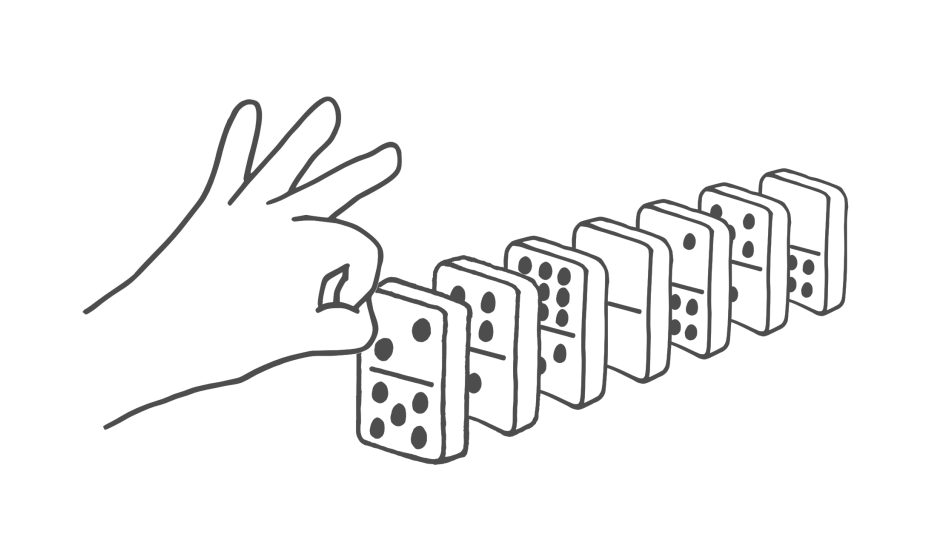Context
...uplinks, including horizontal links to competitors or antipatterns
- Assumes you have a goal (links to goal setting stuff like goal factoring)
- Assumes you are unconflicted about the value of the goal (otherwise try things like Internal Double Crux)
Pattern
Problem
Changing behavioral patterns is often hard.
Much of human behavior is the result of chaining together a series of atomic reflex actions into complex behaviors without any need for active cognition. Sometimes these behaviors are adaptive and appropriate; sometimes they are not. For example, we might wish to exercise more, to drink more water, to get more sleep, to be more compassionate with a difficult coworker, or to take the stairs rather than the elevator up to our office. It can be difficult to change behavioral patterns. Setting a goal and being coherently motivated to accomplish it is often not enough; it's one thing to desire an outcome, and it's another thing to bring it about.
Solution
Modifying existing trigger-action patterns starts with close attention to the concrete detail. It’s less about things like “when I exercise, I get discouraged” and more about “when I run for a while, my chest starts to ache, and when my chest starts to ache, I start thinking about how far away the end is, and when I start thinking about how far away the end is, my enthusiasm for getting fit vanishes.”
This level of detail allows us to break down our behavior into blocks and parts, giving us a language to encode both physical and cognitive actions. That encoding often brings with it understanding and insight—a sort of gears-level awareness of what our brains are doing from moment to moment—and that insight, in turn, gives us a powerful tool for change.
Trigger-action planning is a four-step process:
- Choose a goal (a desired outcome or behavior)
- Identify a trigger (something that will happen naturally)
- Decide on an action that you want to occur after the trigger
- Rehearse the causal link (e.g. with deliberate visualization)
To start with, it’s often easiest to take existing trigger-action patterns and tweak them; sometimes changing one key link in a chain can produce an entirely new behavior. For instance, if you have a goal of exercising more, you might notice that your usual routine has you walking into the building and heading straight for an elevator. You can increase your daily physical activity with a simple TAP—when you feel the metal of the door handle (trigger), you’ll remember to look over at the stairwell (action).
TAPs fail in one of two places—when you don’t notice the trigger, and when you end up not taking the action. By setting the action in the example above as “look at the stairs” instead of “take the stairs,” you’re making that second failure mode much less likely. Instead, what you’re doing is providing yourself with an affordance—the TAP doesn’t make you take the stairs, it just reminds you that taking the stairs was a thing you wanted to do. It acts to summon your awareness, tugging you out of your usual unthinking elevator routine, and drawing your System 2’s attention to the situation. Having noticed the stairs, you’re about a million times more likely to actually walk up them, and if you find yourself consistently not wanting to, then you’ve got a different sort of bug, and your TAP isn’t a complete solution anyway (see context section).
Therefore:
* Identify specific triggers and small actions to take upon experiencing the trigger; rehearse the new trigger action plan until it happens automatically.

Going further
downlinks